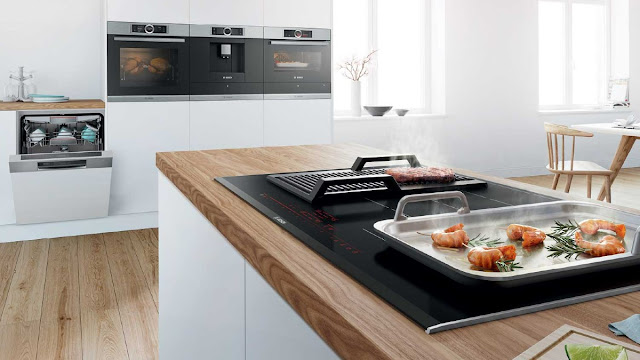Household Cooking Appliances Market To Witness Booming by Forecast Period 2024-2026 Top Key Players

How big is Household Cooking Appliances Market?
During the forecast period from 2021 to 2028, this market is predicted to grow at a CAGR of 5.3 percent, from $237.3 billion to $377.70 billion in 2028. Kitchen appliances are kitchen appliances that are designed to make cooking a breeze.
Overview -
Over the projected period, the Household Cooking Appliances Market is expected to develop due to an increase in the number of nuclear families, changing dietary tastes, and an increase in the number of working women and single professionals. Stringent energy efficiency requirements in several areas of the world, the simple availability of household kitchen equipment on e-commerce websites, a growing preference for home automation, and the continuing launch of smart cooking goods are all projected to contribute to the industry's growth.
Demand for Household Cooking Appliances -
The growing desire to eliminate human interaction and automate cooking has resulted in a slew of new improvements in kitchen gadgets. As a result, as part of their attempts to encourage household consumers to replace their traditional cooking appliances with modern cooking appliances, manufacturers are often maintaining the original mechanisms and merging the latest technology into the modern appliance. The demand for this cooking equipment is also increasing, as many people have taken up cooking as a pastime and are thus purchasing the most up-to-date appliances.
Driving Factors -
The rising popularity of the smart home idea bodes well for the market's growth in the next years. Technology advancements have resulted in the advent of novel home cooking items that include touch screens and built-in cameras, as well as networking and voice assistants.
Smart kitchen appliances that are Internet of Things (IoT) enabled can be monitored and operated remotely via the internet utilizing smartphones.
Demand for Household Cooking Appliances -
The growing desire to eliminate human interaction and automate cooking has resulted in a slew of new improvements in kitchen gadgets. As a result, as part of their attempts to encourage household consumers to replace their traditional cooking appliances with modern cooking appliances, manufacturers are often maintaining the original mechanisms and merging the latest technology into the modern appliance. The demand for this cooking equipment is also increasing, as many people have taken up cooking as a pastime and are thus purchasing the most up-to-date appliances.
Driving Factors -
The rising popularity of the smart home idea bodes well for the market's growth in the next years. Technology advancements have resulted in the advent of novel home cooking items that include touch screens and built-in cameras, as well as networking and voice assistants.
Smart kitchen appliances that are Internet of Things (IoT) enabled can be monitored and operated remotely via the internet utilizing smartphones.
High energy consumption levels linked with household kitchen appliances, on the other hand, have always been a key source of concern for consumers. As a result, consumers have begun to favor household kitchen appliances with an Energy Star certification. Appliances that have been certified have cutting-edge technologies that are meant to save energy. Cooking tools that might potentially reduce energy use and simplify cooking are progressively gaining popularity among consumers.
Comments
Post a Comment